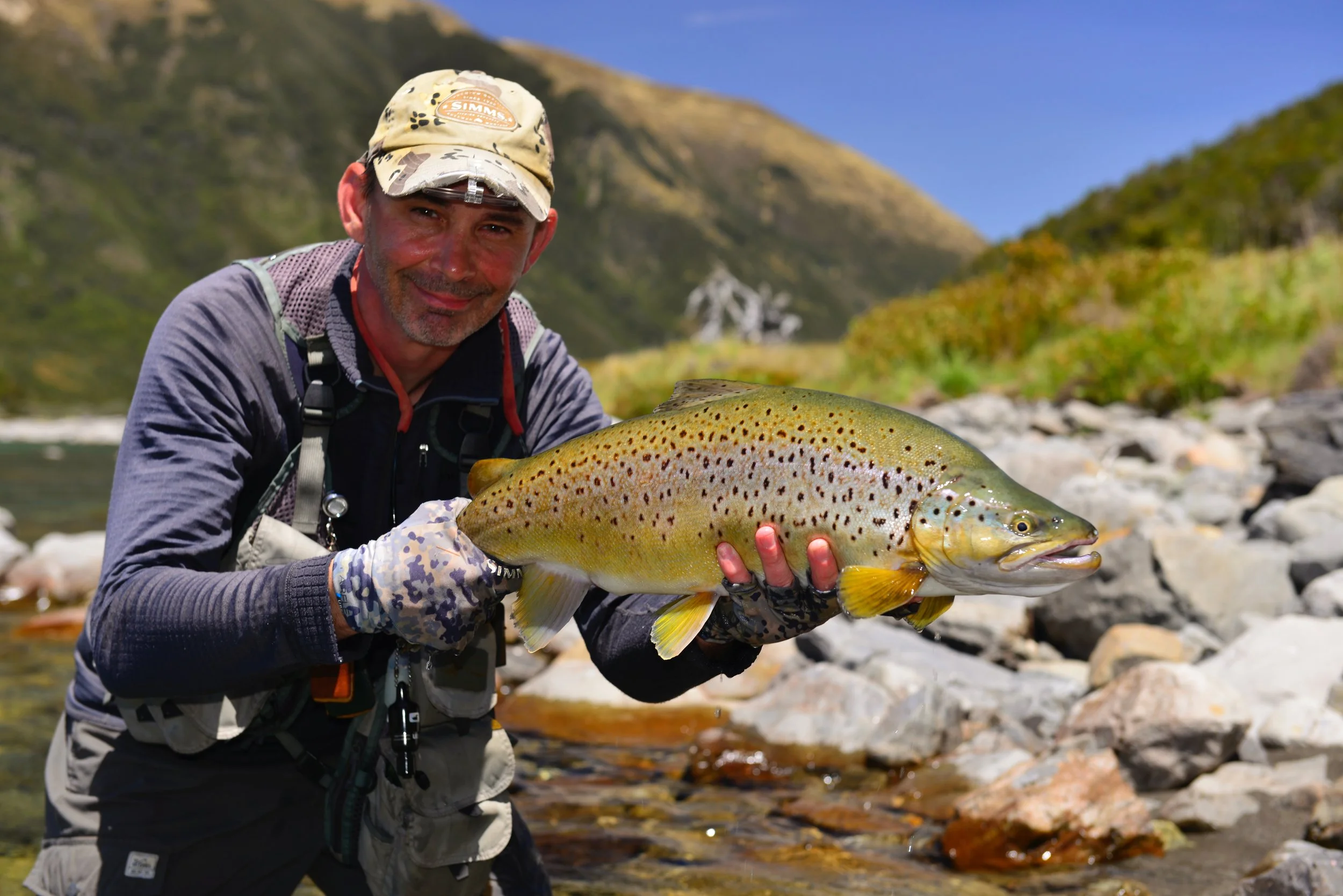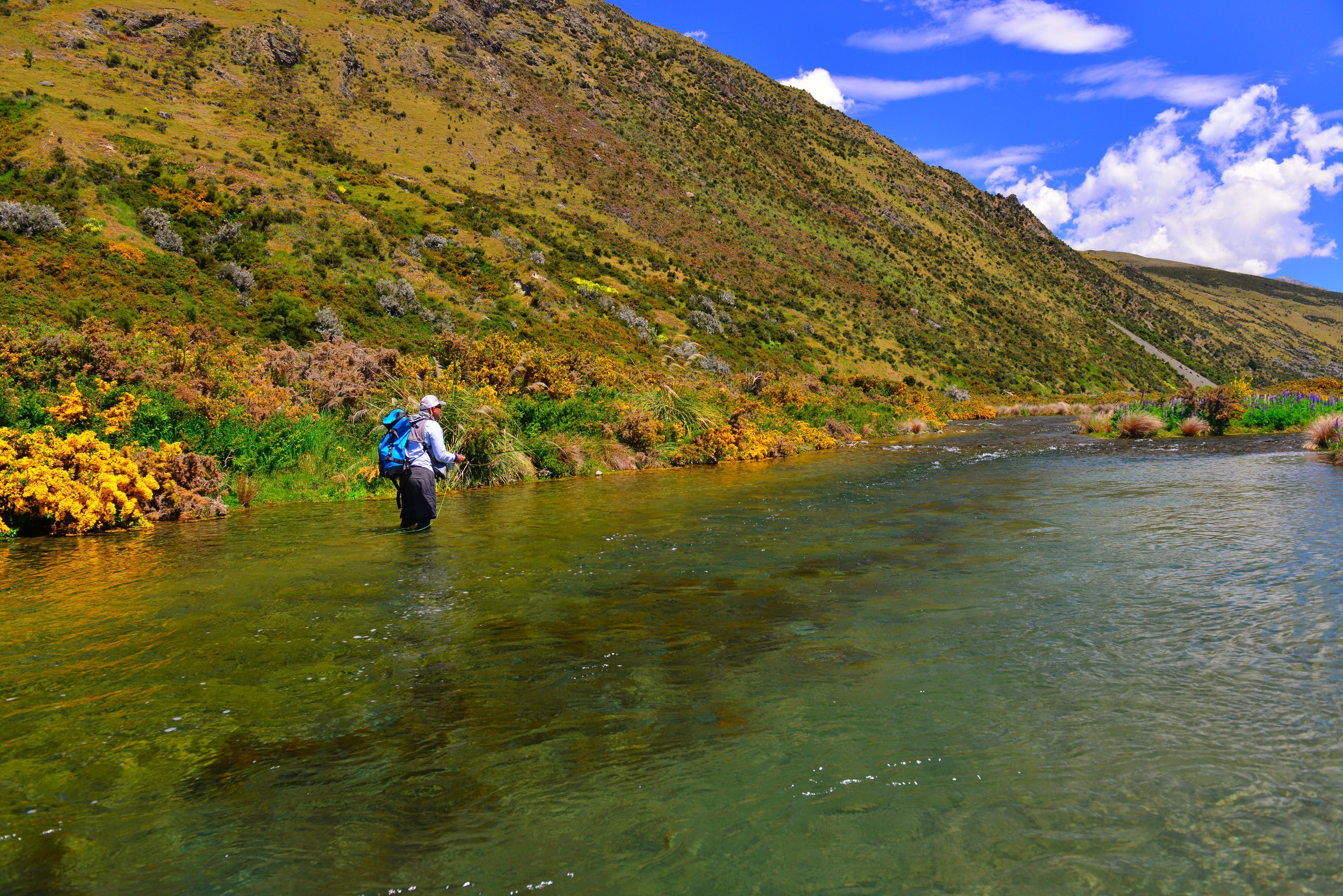
Mårten Lindhé
1. Choice of equipment: Rods, reels, fly lines, fly floatants, clothes, glasses and other useful items.
When it comes to the choice of equipment. Rods, reels fly lines etc. I have the privilege to try out a hole bunch of different rods, reels and fly lines. My best buddy René Palmér are a very skilled angler who runs and owns one of the best fly fishing shops in Sweden, flyfishingmasters.se At the movement I have to say my favorite setup for dry fly fishing are the Hardy Zephrus Ultralite 9 fot #5. Put a Hatch Finatic 4 reel with at least 50 meters ofbacking on with a Scientific Anglers MPX WF Line #5, and you have a lovely combo. When it comes to clothes I prefer Patagonia. They have a broad lineup from base layers to jackets. And most of all I like what they stand for as a brand. When it comes to polarized glasses, it’s important they fit well on your face. I never travel without several pars with me, for different light conditions. Smith Optics or Serengeti eyewear is a good choice. Although all my fly fishing I do, is catch and release so bring your pliers and net with you at all times.
2.Leader material, build up, length and knots.
I have tried out many different brands over the years.I have come to the conclusion only to use Stroft factory GTM tapers 15’ leader, 3X 4X and build them up from there with tippet rings. Tippet material I use for that is Stroft GTM tippet material. Practical knots I’m using are the nail knots, improved clinch knot and surgeon knot. It’s important to wet your knots before tighten them up.
3. Approach and stealth.
Most of my fly fishing I do is all about stalking the trout and hunt the fish. I fish mainly in gin clear waters in New Zealand or some of the Balkan countries. Sight fishing after trout demands you to have a low and stealthy profile and move slowly. If the trout spots you, you are in trouble. It’s all about the experience how close you can get to make a nice cast. Sometimes you only get one chance at it and it’s gone.
4. Reading the water.
I always start by looking by the bank and the nearby currents. It can be overhanging trees, logs in the water, foam lines, edge waters. Little small micro currents by narrows rock formations, undercut banks, deep holes, bridge piers. But it’s a very difficult question to answer. The most important thing is don’t rush take your time, sharpened your eyes for movement and shadows in the water. Sight fishing and reading waters requires some skill, it’s something you have to practice over the years.
5. Casting ability which casts are essential.
For myself I feel it’s important to be able to execute a cast with accuracy, both from land and water. A good overhand cast or single spey cast is something everybody should practice. Sometimes the cast doesn’t have to be very long, concentrate on accuracy instead, it’s my mantra. Of course sometimes you have to make those longer cast, but keep in mind it’s hard to set the hook in those cases. I cast with my right arm, sometimes situations arise when I need to throw over my left shoulder. This is something everyone should practice on. To sum it up, regardless which cast you use, accuracy is the most important thing for my fly fishing.
6. Entomology, what should we know.
For me personally it’s very important to now what the fish are feeding on. Entomology has become a major tool for me. It has help me a lot in my fly tying carrier, and it’s a big advantage to have some entomology skills when you are fly fishing. I believe when I teach people about fly fishing, I always try to introduce them to some basic insects knowledge. I believe it makes the hole experience more rewarding.
7. Rise forms Can they tell us something?
This question, I think goes hand in hand with your entomology skills. Regardless if it’s a splash rise or a tiny sip rise you have to take a look around, what kind of insects are hatching. In what stage are the insects? I have a good example. In May/June it’s time for the big mayflies to hatch. The big drake Danica and Vulgata hatches in big numbers in the right conditions. I stood and observed a hatching Vulgata crawl out of its emerger skin. The dun stood safely on the surface to dry it’s wings. The trout ignored it totally and ate the empty skin when it emerged. So nowadays I always have a imitation of the empty shell.
8. Fly selection, size, shape, materials, which flies are essential, favourite fly.
Then it comes to fly selection I’m as picky as the fish can be sometimes. I have been tying flies for over 30 year and I’m a pro member for www.swisscdc.com They have a broad range of colors and sizes of cdc, different dubbing and natural hair. So most of my flies contains an element of CDC. It’s a great and superior material in many regards. It’s easy to work with, it floats well and makes a nice footprint on the surface. Then it comes to the question about, which flies are essential to have in your fly box? Tricky question, for me it’s here my entomology skills comes in place. Knowing what kind of insects are hatching in that particular river at that time of the yearhelps a lot. If I’m fishing an unknown river or lake I make sure to have some basic mayflies, caddies flies in different sizes and color. Some spent spinners, emerger and some terrestrial patterns can come in handy sometimes. To sum it all up it’s all about match the hatch.
9. Presentation and drifts.
The presentation and the drift of the fly are of great importance, maybe the most important. The fly should land as close as you can get away with to the fish, to avoid any micro currents and present your fly drag free. If you don’t present your fly correctly you will not have any success and the fish will reject it. The combination of a long leader, good casting and presentation skills, is the key to success on the water.
10. Upstream or downstream?
It’s a tricky question to answer. I mostly fish in clear waters in New Zealand or some country in the Balkans It’s all about stalking the trout. Don’t make yourself visible to the trout and stay out of the window. So I will say it’s more upstream or maybe in a 45 degree angle. It all depends on the situation. Sometimes you maybe don’t have any option and have to try a downstream cast at the fish. In those scenarios a pile cast or a parachute cast can be in good use.
11. Fighting fish.
Use the right equipment for the situation. This is where the butt section in the rod should do the job. Work the fish in different angles, not to much line out. If the fish runs downstream or upstream, run to keep it close to you. And try to play the fish as fast as you dare. Make sure the fish have plenty of time to rest before releasing it. The lactic acid the fish build up in the body under a fight can kill the fish.













